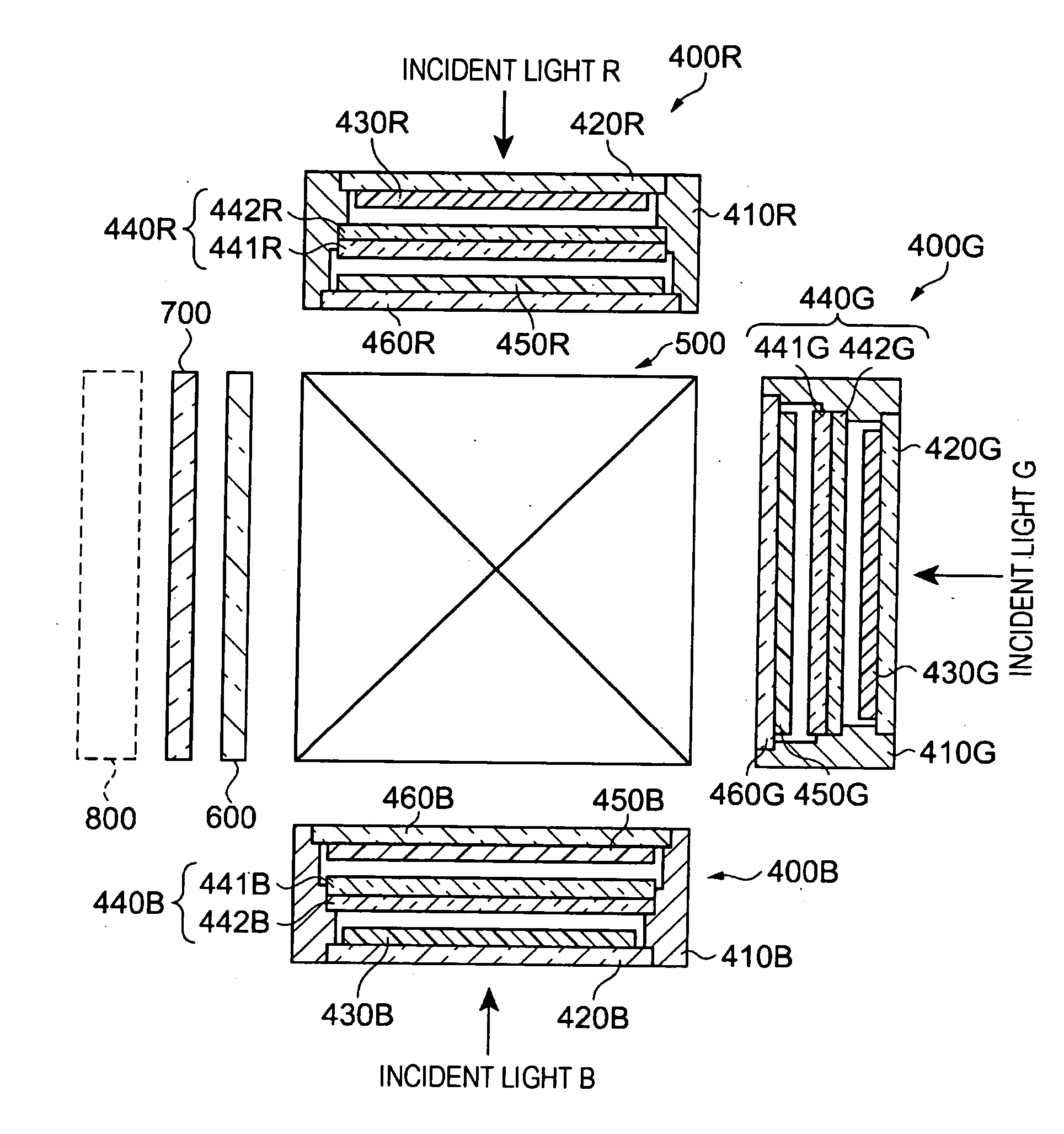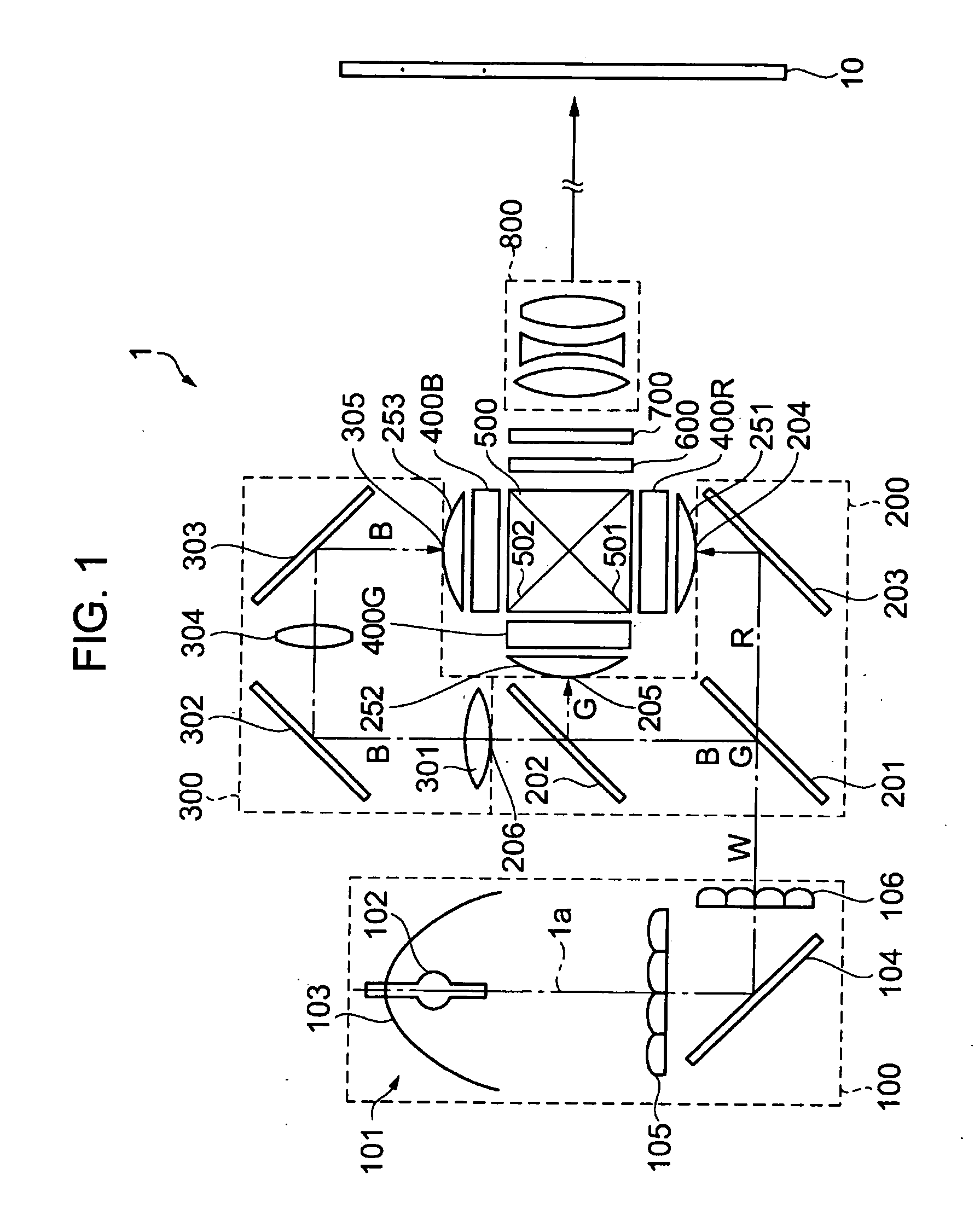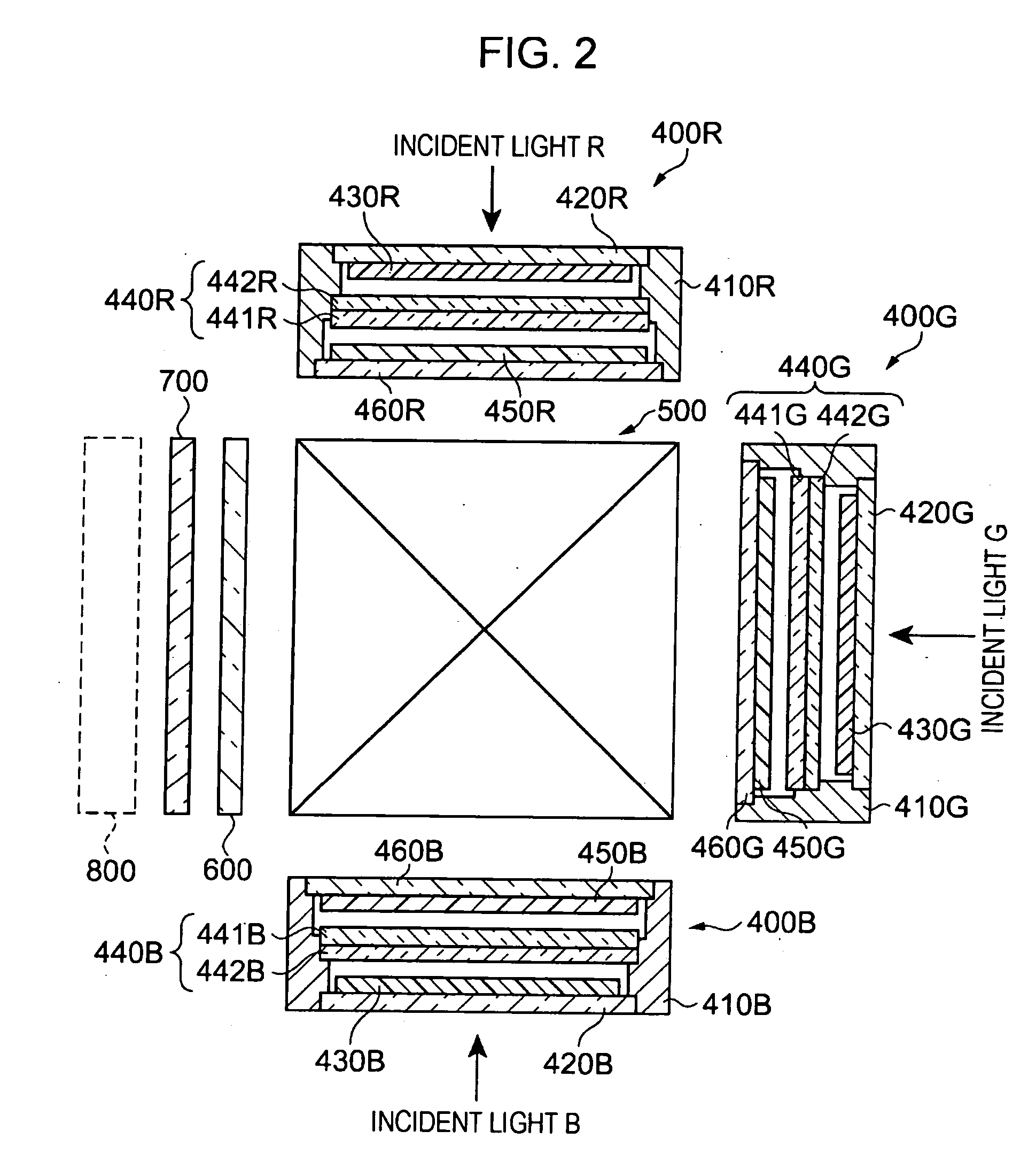Liquid crystal projector
a liquid crystal projector and projector technology, applied in projectors, television systems, instruments, etc., can solve the problems of deteriorating image quality, affecting the clearness of projected images, and affecting the effect of image quality, so as to prevent dust or the like from being attached, enhance the heat radiation of light modulating means, and improve the effect of heat conductivity
- Summary
- Abstract
- Description
- Claims
- Application Information
AI Technical Summary
Benefits of technology
Problems solved by technology
Method used
Image
Examples
first embodiment
[0032]FIG. 1 is a plan view schematically illustrating a liquid crystal projector according to a first embodiment of the invention and FIG. 2 is a partial plan view illustrating an optical system.
[0033] Referring to FIG. 1, the liquid crystal projector 1 includes a lighting optical system 100, a colored-ray dividing optical system 200 as colored-ray dividing means, liquid crystal units 400R, 400G, and 400B, dichroic prism 500 (hereinafter, referred to as prism) as colored-ray synthesizing optical means, a ¼ wavelength plate 600, a birefringent plate 700 as a second birefringent plate, and a projection lens 800 as optical projection means. The liquid crystal projector 1 further includes a relay lens system 300 for guiding blue rays B among colored rays divided by the colored-ray dividing optical system 200 to the liquid crystal unit 400B.
[0034] The lighting optical system 100 includes a reflecting mirror 104 for bending an optical axis 1a of light emitted from the light source unit...
second embodiment
[0078] A second embodiment of the invention provides a liquid crystal projector in which the ⅓ wavelength plate 600 and the birefringent plate 700 as the second birefringent plate disposed between the dichroic prism 500 and the projection lens 800 in the first embodiment are disposed inside the liquid crystal unit. Accordingly, the configuration and function other than the liquid crystal unit 400 are similar to those of the first embodiment and thus description thereof will be omitted.
[0079]FIG. 5 is a partial plan view illustrating an optical system according to the second embodiment of the invention. The same elements as the first embodiment are denoted by the same reference numerals.
[0080] Liquid crystal units 900R, 900G, and 900B have the same structure. Colored rays are incident on the liquid crystal units 900R, 900G, and 900B through the light condensing lenses 251, 252, and 253 from the colored-ray dividing optical system 200 and the relay lens system 300. Each liquid cryst...
third embodiment
[0096]FIG. 6 is a partial plan view illustrating an optical system according to a third embodiment of the invention.
[0097] The third embodiment of the invention provides a liquid crystal projector having a structure that the ¼ wavelength plate 600 and the birefringent plate 700 as the second birefringent plate in the first embodiment are omitted. Accordingly, the structure and the transmission state of the ray exiting from the prism 500 are similar to the first embodiment and thus description thereof will be omitted.
[0098] The first embodiment and the second embodiment provide the liquid crystal projector having a dividing function that the respective synthesized rays indicating the synthesized color image enlarged and projected onto the projection plane of the screen 100 through the projection lens 800 are divided into four points of a tetragonal shape in the horizontal and vertical directions, but the third embodiment provides a liquid crystal projector having a dividing functio...
PUM
| Property | Measurement | Unit |
|---|---|---|
| transmittance | aaaaa | aaaaa |
| angle | aaaaa | aaaaa |
| tilting angle | aaaaa | aaaaa |
Abstract
Description
Claims
Application Information
 Login to View More
Login to View More - R&D
- Intellectual Property
- Life Sciences
- Materials
- Tech Scout
- Unparalleled Data Quality
- Higher Quality Content
- 60% Fewer Hallucinations
Browse by: Latest US Patents, China's latest patents, Technical Efficacy Thesaurus, Application Domain, Technology Topic, Popular Technical Reports.
© 2025 PatSnap. All rights reserved.Legal|Privacy policy|Modern Slavery Act Transparency Statement|Sitemap|About US| Contact US: help@patsnap.com



